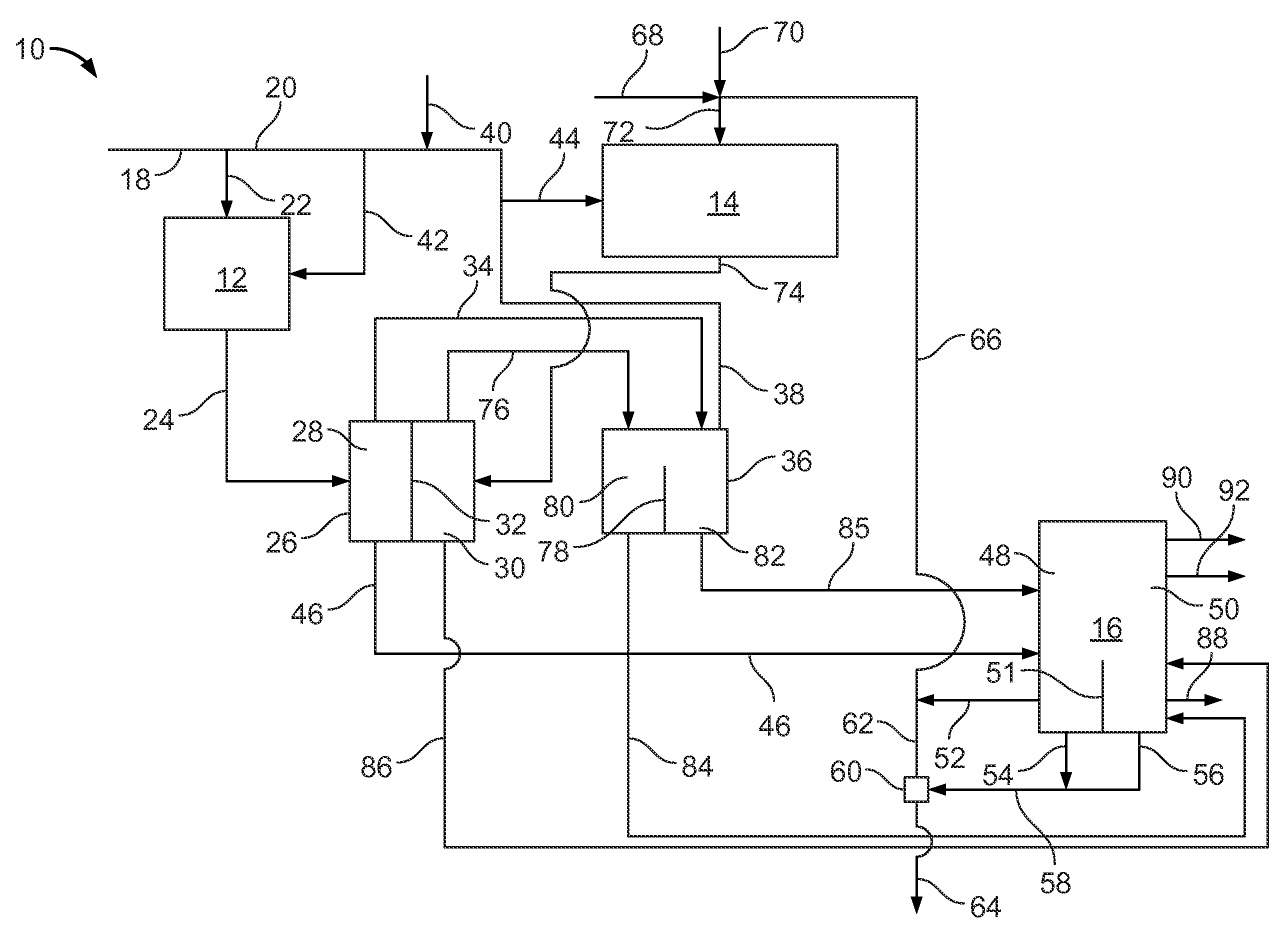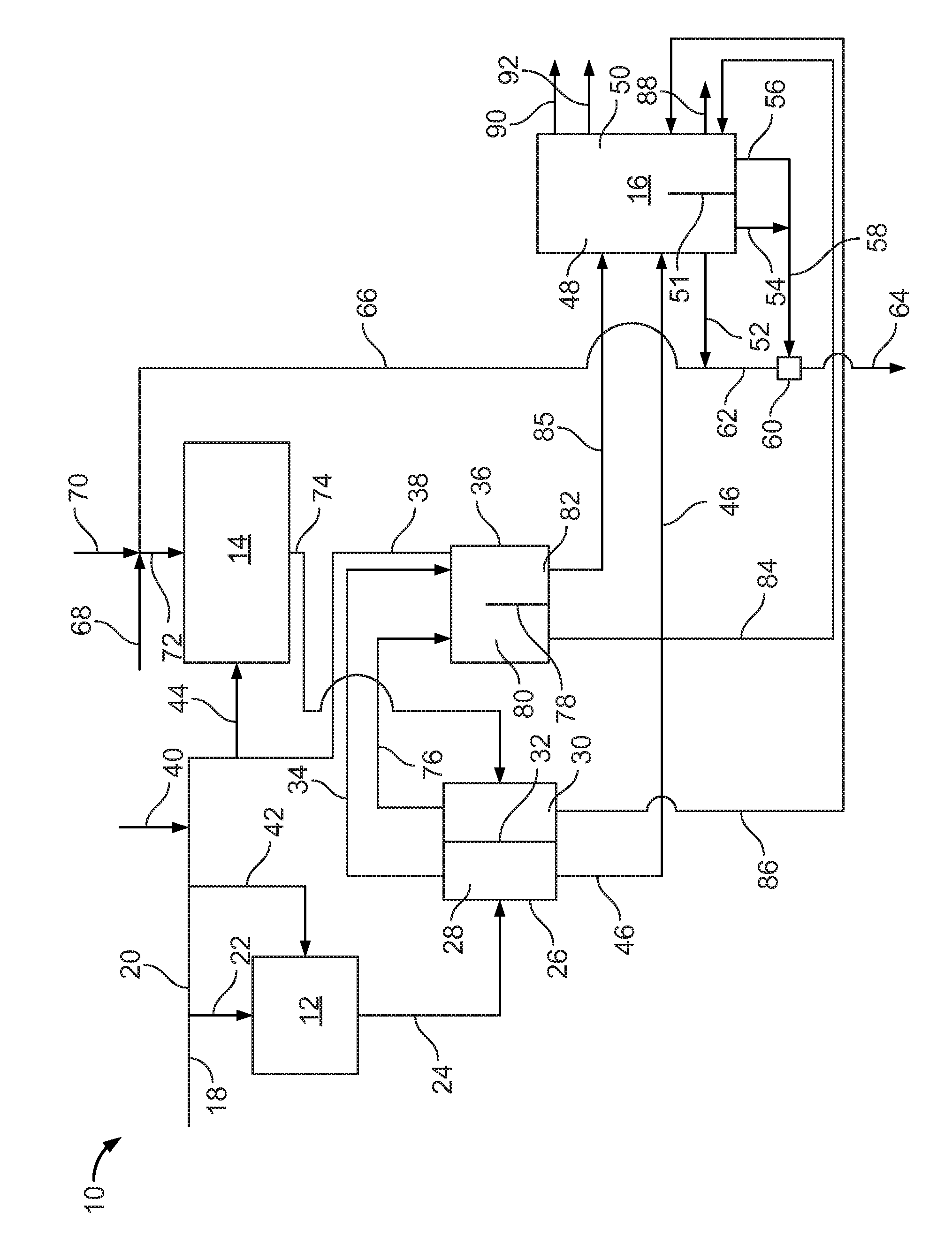Hydrocarbon conversion process
a technology of hydrocarbon conversion and conversion process, which is applied in the direction of hydrocarbon oil treatment products, lighting and heating apparatus, furnaces, etc., can solve the problems of high general undesirable nitrogen and lower hydrogen content of fcc feed, and high coke formation in the fcc process
- Summary
- Abstract
- Description
- Claims
- Application Information
AI Technical Summary
Benefits of technology
Problems solved by technology
Method used
Image
Examples
case 1
[0067 provides an example of no hydrocracking of the dirty diesel fraction and UCO fraction (i.e., QHC and QUCO are substantially zero) In this case, a 15 percent conversion in the hydrotreating zone is achieved, and generally results in an unacceptable diesel product with high sulfur and low cetane numbers as shown in table 2. In cases 2 and 3, about 27 percent and about 40 percent, respectively, of the FCC quality UCO is provided as part of the feedstock (with the dirty diesel fraction) to the hydrocracking zone to provide an acceptable diesel product with a total conversion rates of about 33 and about 45 percent, respectively, of the incoming feedstock (QINPUT).
[0068]Thus, in this aspect, the total conversion levels of the initial feedstock, which may be but not limited to VGO, may be modified by increasing or decreasing the flowrate of the UCO to the hydrocracking zone, the hydrocracking zone conversion rate, or both. Changes to the UCO flowrate may be made as part of a continuo...
PUM
 Login to View More
Login to View More Abstract
Description
Claims
Application Information
 Login to View More
Login to View More - R&D
- Intellectual Property
- Life Sciences
- Materials
- Tech Scout
- Unparalleled Data Quality
- Higher Quality Content
- 60% Fewer Hallucinations
Browse by: Latest US Patents, China's latest patents, Technical Efficacy Thesaurus, Application Domain, Technology Topic, Popular Technical Reports.
© 2025 PatSnap. All rights reserved.Legal|Privacy policy|Modern Slavery Act Transparency Statement|Sitemap|About US| Contact US: help@patsnap.com


